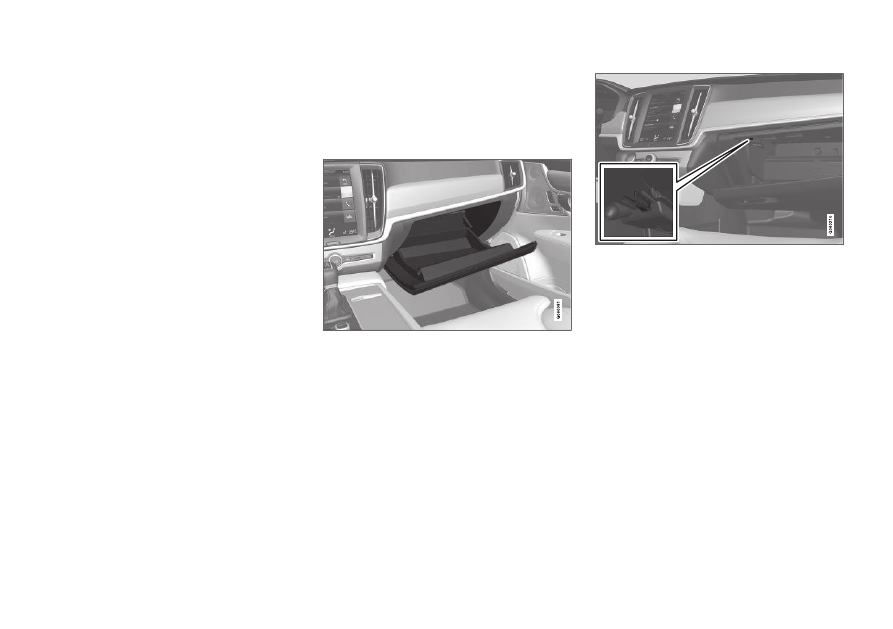Volvo S90 (2019 year). Instruction - part 33

LOADING, STORAGE AND PASSENGER COMPARTMENT
}}
* Option/accessory.
557
Related information
•
•
Passenger compartment interior (p. 554)
Using the glove compartment
The glove compartment is located on the pas-
senger side. The glove compartment can be
used to store the Owner's Manual, maps, etc.
There is also room for a pen and a card holder.
Locking and unlocking the glove box*
The glove compartment can be locked when the
vehicle is left at a workshop, hotel, etc. The glove
compartment can then only be locked/unlocked
with the glove compartment key.
Storage compartment for the key. The illustration is
generic – the design may vary.